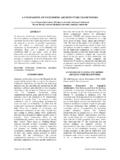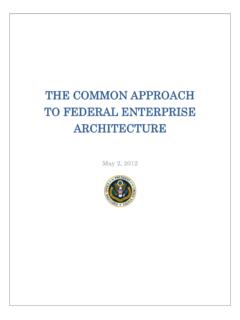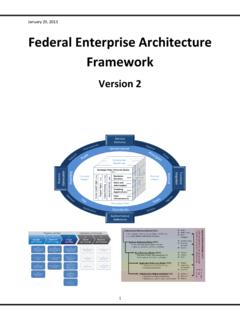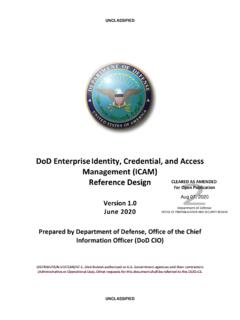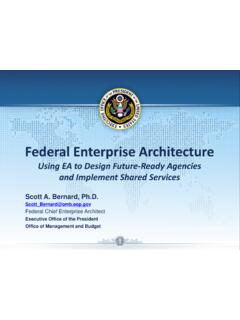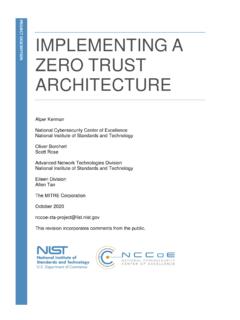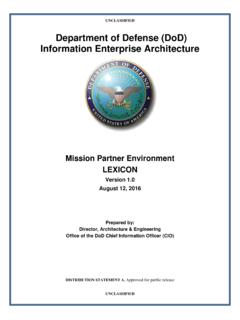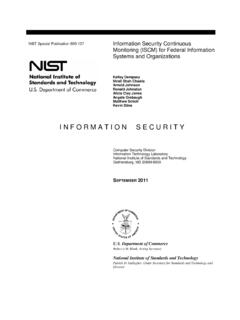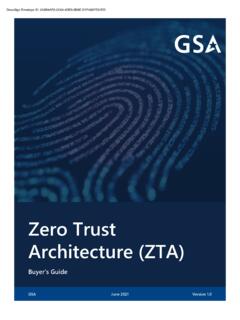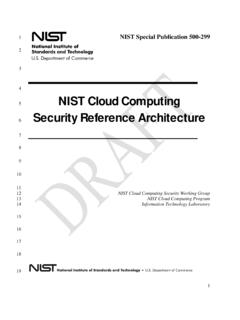Transcription of Federal Zero Trust Strategy - Moving the U.S. Government ...
1 DRAFT FOR PUBLIC COMMENT 1 SUBJECT: Moving the Government Towards Zero Trust Cybersecurity Principles AUTHOR: Office of Management and Budget I. Overview The United States Government faces increasingly sophisticated and persistent cyber threat campaigns that target its technology infrastructure, threatening public safety and privacy, damaging the American economy, and weakening Trust in Government . Every day, the Federal Government executes unique and deeply challenging missions: agencies safeguard our nation s critical infrastructure, conduct scientific research, engage in diplomacy, and provide benefits and services for the American people, among many other public functions. To deliver on these missions effectively, our nation must make intelligent and vigorous use of modern technology and security practices, while avoiding disruption by malicious cyber campaigns.
2 Successfully modernizing the Federal Government s approach to security requires a Government -wide endeavor. In May of 2021, the President issued Executive Order (EO) 14028, Improving the Nation s Cybersecurity,1 initiating a sweeping Government -wide effort to ensure that baseline security practices are in place, to migrate the Federal Government to a zero Trust architecture , and to realize the security benefits of cloud-based infrastructure while mitigating associated risks. 1 Exec. Order No. 14028, 86 FR 26633 (2021). DRAFT FOR PUBLIC COMMENT 2 II. Purpose In the current threat environment, the Federal Government can no longer depend on perimeter-based defenses to protect critical systems and data. Meeting this challenge will require a major paradigm shift in how Federal agencies approach cybersecurity.
3 As described in the Department of Defense Zero Trust Reference architecture ,2 The foundational tenet of the Zero Trust Model is that no actor, system, network, or service operating outside or within the security perimeter is trusted. Instead, we must verify anything and everything attempting to establish access. It is a dramatic paradigm shift in philosophy of how we secure our infrastructure, networks, and data, from verify once at the perimeter to continual verification of each user, device, application, and transaction. This Strategy envisions a Federal zero Trust architecture that: Bolsters strong identity practices across Federal agencies; Relies on encryption and application testing instead of perimeter security; Recognizes every device and resource the Government has; Supports intelligent automation of security actions; and Enables safe and robust use of cloud services.
4 This Strategy does not attempt to describe or prescribe a fully mature zero Trust implementation. Nor does it discourage any agency from going beyond the actions described herein. The purpose of this Strategy is to put all Federal agencies on a common roadmap by laying out the initial steps agencies must take to enable their journey toward a highly mature zero Trust architecture . This recognizes that each agency is currently at a different state of maturity, and ensures flexibility and agility for implementing required actions over a defined time horizon. The Strategy also seeks to achieve efficiencies for common needs by calling for Government -wide shared services, where relevant. Transitioning to a zero Trust architecture will not be a quick or easy task for an enterprise as complex and technologically diverse as the Federal G overnment.
5 But as President Biden stated in EO 14028, Incremental improvements will not give us the security we need; instead, the Federal Government needs to make bold changes and significant investments in order to defend the vital institutions that underpin the American way of life. 2 Department of Defense (DOD) Zero Trust Reference architecture , (U) (U) DRAFT FOR PUBLIC COMMENT 3 III. Goals EO 14028 directs agencies to focus on meeting key baseline security measures across the Government , such as universal logging, multi-factor authentication (MFA), reliable asset inventories, and ubiquitous use of encryption, and to adopt a zero Trust architecture . To do this, the Government s security architecture must avoid implicit Trust in devices and networks, assume networks and other components will be compromised, and generally rely on the principle of least privilege.
6 While the concepts behind zero Trust architectures are not new, the implications of shifting away from trusted networks are new to most enterprises, including many Federal agencies. This will be a journey for the Federal Government , and there will be learning and adjustments along the way as agencies and policies adapt to new practices and technologies. Agencies that are further along in their zero Trust process will need to partner with those still beginning by exchanging information, playbooks, and even staff. Agency chief financial officers, chief acquisition officers, and others in agency leadership will need to work in partnership with their IT and security leadership to build the operational model to deploy and sustain zero Trust capabilities. This Strategy encourages agencies to make use of the rich security features present in cloud infrastructure, while ensuring that agency systems are appropriately designed to support secure use of cloud systems.
7 This Strategy frequently references cloud services, as agencies are broadly expected to continue increasing their use of cloud infrastructure and associated security services. However, the actions in this Strategy also address on-premise and hybrid systems. This memorandum directs agencies to the highest-value starting points on their path to a zero Trust architecture , and describes several shared services which should be prioritized to support a long-term Government -wide effort. This Strategy is a starting point, not a comprehensive guide to a fully mature zero Trust architecture . C omprehensive maturity models and reference architectures are listed in Appendix A, and agencies should use them to plan and execute their long-term security architecture migration plans. Required Actions This memorandum requires agencies to achieve specific zero Trust security goals by the end of Fiscal Year (FY) 2024.
8 Grouped using the five pillars that underpin the zero Trust maturity model of the Cybersecurity and Infrastructure Security Agency (CISA)3, those goals include: 1. Identity: Agency staff use an enterprise -wide identity to access the applications they use in their work. Phishing-resistant MFA protects those personnel from sophisticated online attacks. 3 CISA, Zero Trust Maturity Model , DRAFT FOR PUBLIC COMMENT 4 2. Devices: The Federal Government has a complete inventory of every device it operates and authorizes for Government use, and can detect and respond to incidents on those devices. 3. Networks: Agencies encrypt all DNS requests and HTTP traffic within their environment, and begin segmenting networks around their applications. The Federal Government identifies a workable path to encrypting email in transit.
9 4. Applications: Agencies treat all applications as internet-connected, routinely subject their applications to rigorous testing, and welcome external vulnerability reports. 5. Data: Agencies are on a clear, shared path to deploy protections that make use of thorough data categorization. Agencies are taking advantage of cloud security services to monitor access to their sensitive data, and have implemented enterprise -wide logging and information sharing. EO 14028 required agencies to develop their own plans for implementing zero Trust architecture . Within 60 days of the date of this memorandum, Departments and Agencies shall build upon those plans by incorporating the additional requirements identified in this document, and submitting to OMB an implementation plan for FY22-FY24 and a budget estimate for FY23-24. Agencies should re-prioritize funding in FY22 to achieve priority goals, or seek funding from alternative sources, such as agency working capital funds or the Technology Modernization Fund.
10 Departments and Agencies will have 30 days from the publication of this memorandum to designate and identify a zero Trust architecture implementation lead for their organization. OMB will rely on these designated leads for Government -wide coordination and for engagement on planning and implementation efforts within each organization. DRAFT FOR PUBLIC COMMENT 5 A. Identity Vision Agency staff use an enterprise -wide identity to access the applications they use in their work. Phishing-resistant MFA protects those personnel from sophisticated online Actions 1. Agencies must establish a single sign-on (SSO) service for agency users that can be integrated into applications and common platforms, including cloud services. 2. Agencies must enforce MFA at the application level, using enterprise SSO wherever feasible. For agency staff, contractors, and partners: phishing-resistant MFA is required.
